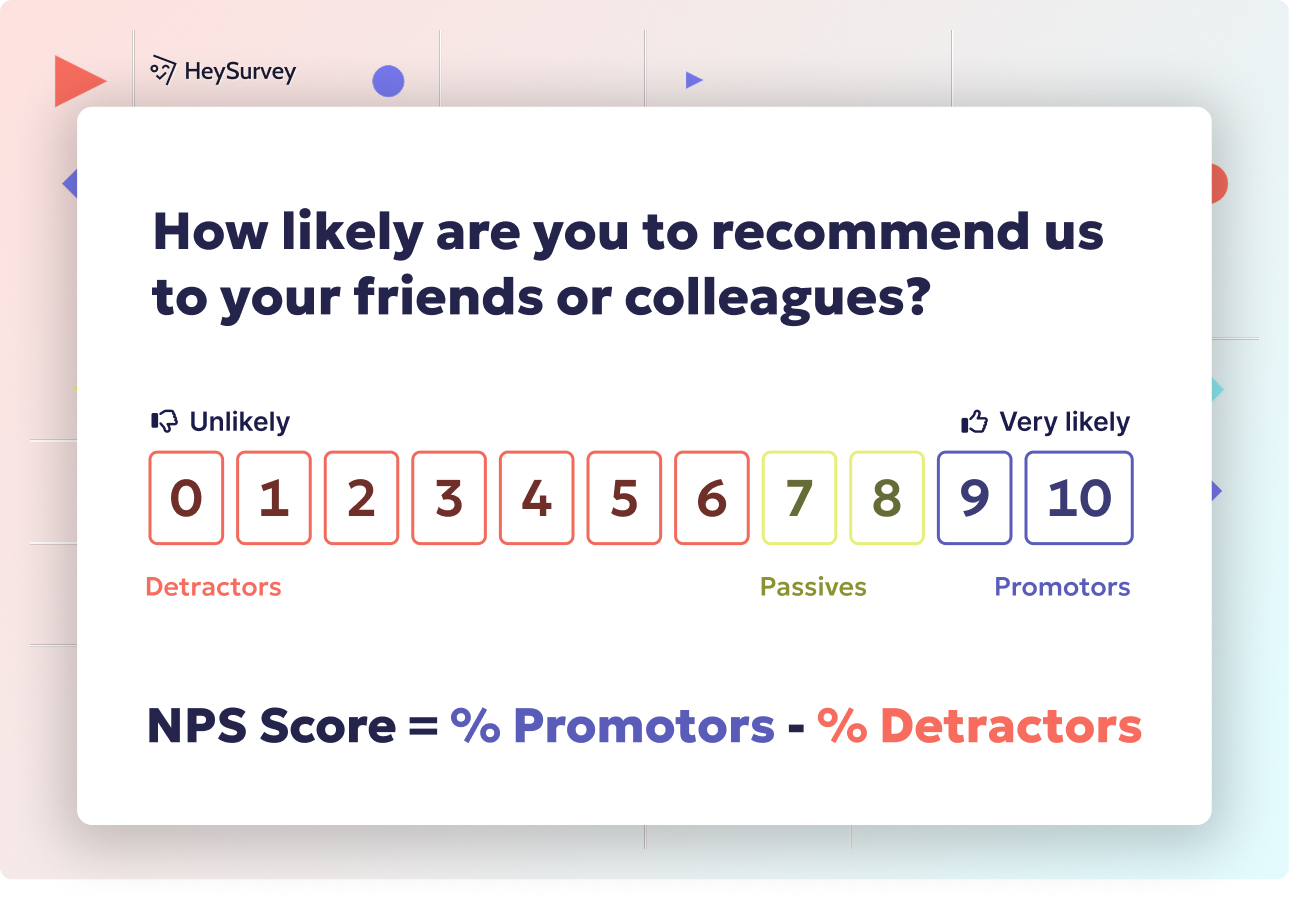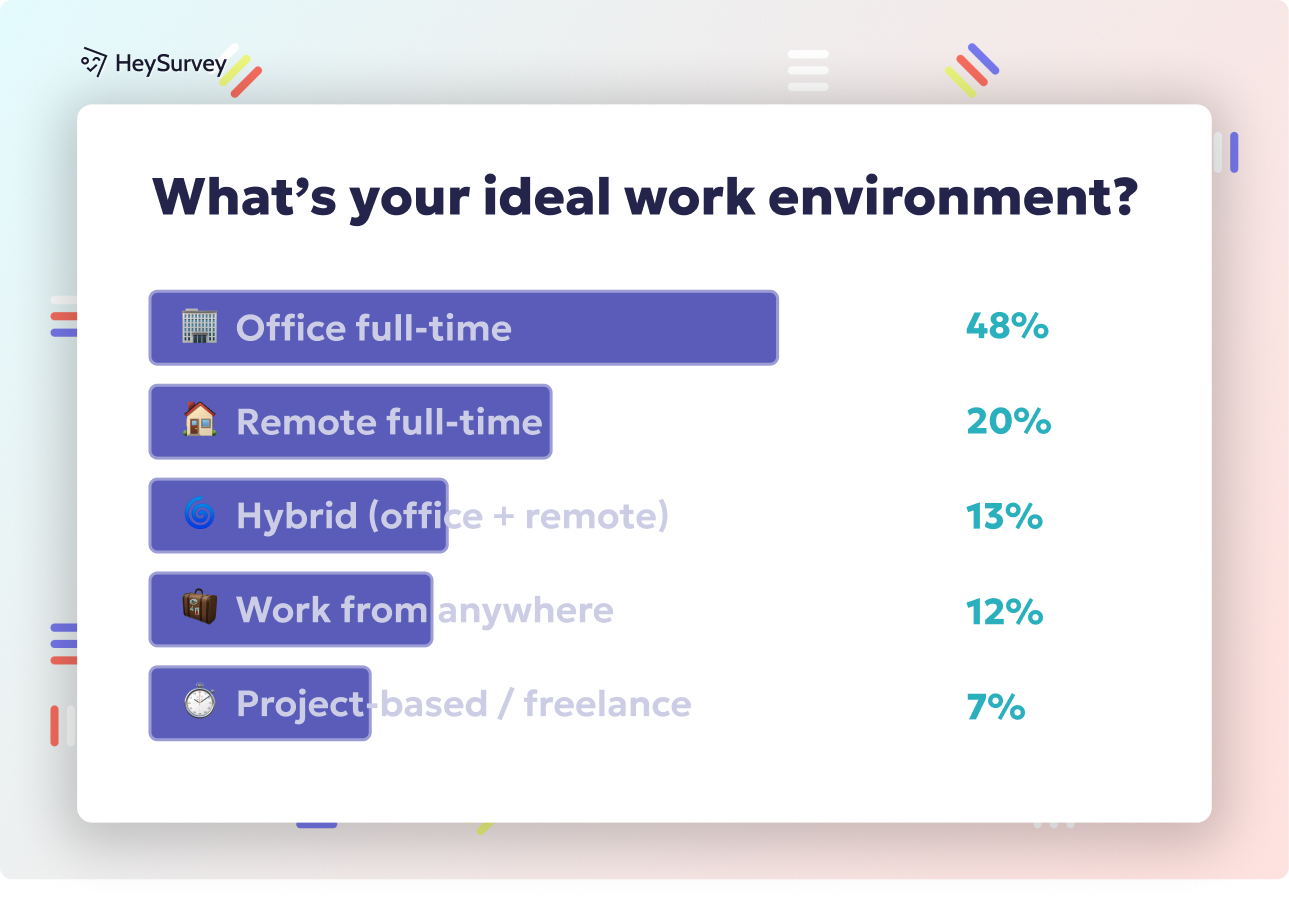31 Ecommerce Survey Questions: Types, Samples & Best Practices
Discover 7 proven ecommerce survey questions with 35+ sample questions to boost customer insights, conversions, and loyalty effectively.
Ecommerce surveys are more than just pop-ups annoyingly blocking the view of a gorgeous product photo. When done right, ecommerce feedback loops can move the needle on conversion rate, average order value, loyalty, and customer lifetime value. Online store surveys fit perfectly at almost every step of the customer journey—from the first click, to post-purchase, to win-back. In this article, you’ll unlock seven survey types for every occasion, get actionable sample questions, and walk away with best practices that’ll have your customers actually wanting to share their insights.
Pre-Purchase Intent Surveys
Why & When to Use
The moment a shopper lands on your site, they’re bursting with potential—but also questions, hesitations, and secret shopping motivations. That’s why a pre-purchase survey is a goldmine for ecommerce brands craving real-time customer insights. Before a first purchase, buyers might be window-shopping, comparing options, or just figuring out if your product solves their unique problem.
This survey fits at the very top of the funnel. Catch them while their excitement is still fresh, even if they’re just browsing anonymously. For many brands, a well-timed shopper intent poll helps distinguish window shoppers from hot leads, letting you segment and personalize follow-up.
What to Write
The placement of your on-site pop-up is everything. Drop these surveys on your homepage, collection pages, or even as a playful widget after they’ve scrolled halfway down a product page.
- Trigger based on time on page, scroll depth, or exit-intent.
- Segment results by traffic source, device (mobile or desktop), and returning vs. new visitors.
- Sprinkle in a little personality—quirky copy increases engagement.
A well-crafted intent survey creates real value for both the visitor (helping them find what they need) and your team (giving you a preview of what’s about to convert—or not). Keep things light, and always include one open-ended question.
5 Sample Questions
What is the main reason you’re shopping for [product] today?
How soon are you planning to make a purchase?
Which factor matters most—price, quality, brand, or reviews?
Have you shopped with us before?
What information is missing that would help you decide?
Research indicates that consumers often overstate their purchase intentions in surveys, leading to discrepancies between stated intent and actual buying behavior. (incontextsolutions.com)
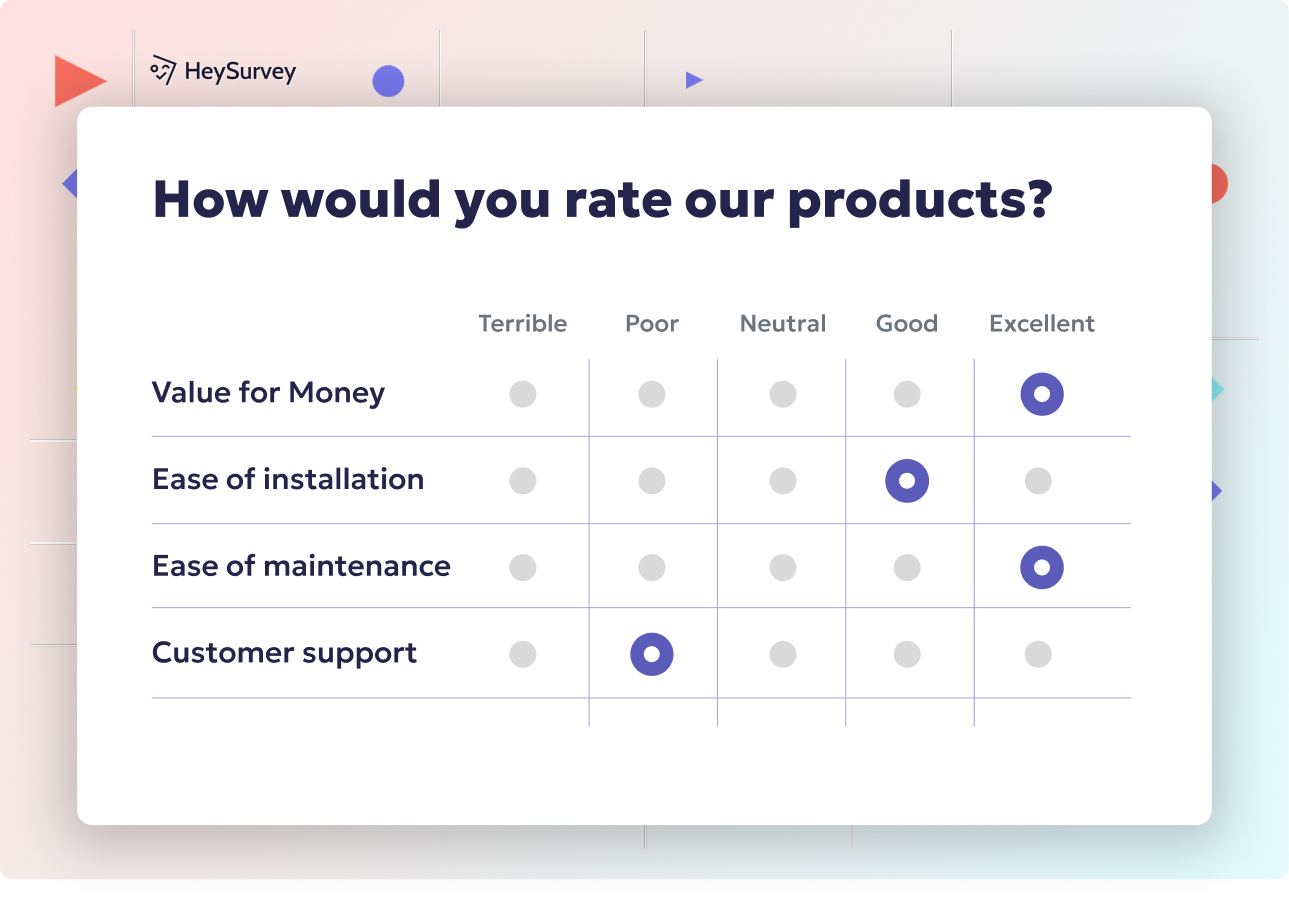
Creating your ecommerce survey with HeySurvey is a breeze! Just follow these three easy steps to get your survey up and running, plus a couple of bonus tips to make it truly yours.
Step 1: Create a New Survey
Head over to HeySurvey and start by creating a new survey. You can either:
- Choose an empty sheet to build from scratch, or
- Pick a relevant pre-built template to save time.
Once selected, your Survey Editor will open—this is where the magic begins. You’ll see the opportunity to name your survey and start customizing.
Step 2: Add Questions
Next, click Add Question at the top or between existing questions to start adding your survey prompts. HeySurvey offers multiple question types like text input, multiple choice, rating scales, and more.
Make sure to:
- Write clear, engaging questions tailored to your ecommerce feedback needs.
- Mark required fields so respondents can’t skip crucial questions.
- Add images or descriptions to spice up your questions if you want.
- Use branching logic if you want to guide respondents based on their previous answers.
This is your chance to collect the insights that really matter!
Step 3: Publish Survey
Ready to go live? Hit the Publish button to generate a shareable link or get embedding code for your online store or email campaigns. Publishing requires a free account login, so create one if you haven’t already.
Your survey is now live, mobile-friendly, and ready to collect valuable customer responses.
Bonus Step: Apply Branding
Make your survey unmistakably yours by uploading your logo in the Branding and Settings panel. Customize colors, fonts, and backgrounds in the Designer Sidebar to match your ecommerce brand’s personality. This helps build trust and looks professional.
Bonus Step: Define Settings or Skip Into Branches
Under the settings panel, you can:
- Set survey start and end dates,
- Limit the number of responses,
- Redirect users upon completion, and
- Allow respondents to view results if desired.
Plus, get savvy with branching logic to personalize the flow based on how someone answers—a great way to keep surveys engaging and relevant.
Click the button below to open a survey template and start crafting your perfect ecommerce survey with HeySurvey today!
Cart Abandonment Surveys
Why & When to Use
If you want to recover lost sales, a strong cart abandonment feedback process is your secret weapon. Picture this: someone loads up their cart with goodies, only to vanish at the last second. This is your chance to swoop in and ask, “Hey, what happened?” By catching them post-exit or right after a cart is left behind, you can uncover confessions about friction points, shipping cost surprises, and trust gaps.
This survey is ideally triggered by an exit-intent pop-up, a follow-up email, or even an SMS nudge. Timing is key—catch them while their memory is fresh, but don’t bombard immediately after they leave.
What to Write
Don’t overthink it: the most effective cart abandonment feedback is micro and direct. Just one powerful question can push the needle, but a short series can give you a deeper understanding. Sweeten the deal with a gentle nudge, like awarding discount codes or loyalty points just for answering.
- Use short, single-question surveys for fast responses.
- Time your trigger within 30 minutes to two hours of cart abandonment.
- Personalize based on cart value or products left behind.
When you unearth what’s driving exits, you get fresh ideas for social proof, new payment options, or friendlier shipping messaging—all straight from the voice of your customer.
5 Sample Questions
What stopped you from completing your purchase today?
Were shipping costs higher than expected?
Did you experience any technical issues at checkout?
Which payment option were you hoping to use?
Is there something we can do to win back your order?
A 2023 Radial survey found that 48% of cart abandonment is due to security concerns. (radial.com)
Post-Purchase Customer Satisfaction Surveys
Why & When to Use
Once a package lands on your customer’s doorstep, their first impressions are golden—and fleeting. Post-purchase surveys sent 3–7 days after delivery help you measure product satisfaction, unboxing delight (or disaster), and the all-important shipping experience. This is your best shot at turning a buyer into a raving fan—or discovering what deflated their excitement.
Catch them while the product is still fresh in their minds. A customer satisfaction for ecommerce survey, delivered by email or embedded on your order confirmation page, can pre-empt support tickets and boost NPS.
What to Write
Mix ratings scales with open-ended feedback for richer insights. The most illuminating surveys: - Ask one or two quick ratings (e.g., satisfaction, delivery experience). - Throw in a free-text field for detailed reactions—especially about packaging or surprises in the box. - Segment by first-time buyers, returning customers, and high-value shoppers.
Turn thanks into data—automatically create customer segments for future upsell, cross-sell, or loyalty campaigns. Ready to see those stars line up?
5 Sample Questions
How satisfied are you with the product you received? (1–5 scale)
Did your order arrive on time?
What did you like most about the unboxing experience?
How likely are you to purchase from us again?
What could we improve for next time?
Product Feedback & Development Surveys
Why & When to Use
Imagine building your next best-seller by inviting customers into your secret lab. Product development surveys let you test new ideas, gather wishlist features, and crowdsource improvements—before you spend a cent on production. These surveys shine after a purchase, or when targeting your most loyal VIPs who love to chime in.
Curious about a new flavor, size, or tech upgrade? Send these surveys after a transaction, or alongside beta releases to gauge real-world reactions. Customers love feeling like insiders, and brands love data they can act on.
What to Write
Don’t just ask, “Do you like it?” Make it visual and specific. Use prototype images, concept mockups, and even sneak previews. A/B test different survey versions to see which questions drive the juiciest ideas.
- Use image options for colors and styles.
- Leverage voice-of-customer feedback to shape marketing copy and feature plans.
- Reward detailed suggestions with points or early access.
A feature request question unlocks the power of your most creative fans. Their off-the-cuff answers often predict the next trend.
5 Sample Questions
Which additional color would you most like to see?
Rate the quality of materials used (1–5).
What one feature would make this product perfect?
How does our product compare to alternatives you’ve tried?
Would you recommend improvements to Packaging, Durability, or Design?
In a survey of over 6,500 consumers, 94% indicated that customer ratings and reviews are the most influential factors in their online purchase decisions, surpassing price, free shipping, brand preference, and recommendations from family and friends. (ecommercefastlane.com)
Website Usability & CX Surveys
Why & When to Use
Fabulous products mean little if visitors can’t find them—or get frustrated by odd layouts on mobile. Website usability surveys target shoppers where they’re most likely to get stuck, such as high-bounce pages or nearly bouncing out the door. Use these to discover navigation pain points, accessibility snags, and opportunities for CX upgrades.
Roll these surveys out on both desktop and mobile, tailoring questions to where each persona might hit friction. Embedded pop-ups or brief forms at key moments yield the best scoop.
What to Write
A memorable UX survey should be brief and focused, capturing insights without derailing the browsing experience.
- Embed on product collection pages, search result screens, or after awkward drop-offs.
- Pair with heat-mapping or session recording for ultra-precise diagnostics.
- Follow up with segmented questions for first-time visitors versus returning customers.
Remember: design questions so even the mildest annoyance gets a voice. Every small fix can have an outsized impact on conversion rate.
5 Sample Questions
How easy was it to find the product you wanted?
Did any links or buttons fail to work?
How would you rate page load speed?
Was product information clear and complete?
What nearly stopped you from continuing to browse?
Net Promoter Score (NPS) & Loyalty Surveys
Why & When to Use
NPS is the glam rockstar of customer loyalty surveys—quick, to-the-point, and shockingly predictive of who’ll buy again, refer friends, or ghost your online store forever. Deploy your ecommerce NPS survey quarterly, ideally after a shopper has made at least one successful purchase.
Why? Because knowing your share of promoters versus detractors lets you forecast revenue, steer referral programs, and spot churners before they vanish. Tag your biggest fans for exclusive offers, and nurture those who gave you a middling score.
What to Write
Every NPS survey needs a clean, easy-to-answer scale. Make it visually punchy, with space for short follow-up questions. After all, you want not just scores, but reasons.
- Calculate your NPS by subtracting % of detractors (0-6) from % of promoters (9-10).
- Tag promoters for review/affiliate/referral campaigns.
- Funnel unhappy responses into dedicated recovery workflows or support follow-ups.
When you treat voice of customer as your growth engine, you unlock deeper loyalty and word of mouth.
5 Sample Questions
On a scale of 0-10, how likely are you to recommend us to a friend?
What is the primary reason for your score?
What would turn us into your go-to brand?
Which competing brand do you also buy from?
How often do you purchase [category] products?
Exit-Intent / Churn Risk Surveys
Why & When to Use
Not all heroes wear capes—some just save the sale at the very last second. Churn surveys are deployed when someone requests a return, cancels a subscription, or simply goes cold after loving you once. Discovering the “why” behind these behaviors gives you a final chance to make things right—or win them back next month.
Rolling these out as an exit-intent prompt, an SMS, or a trigger in your returns workflow is all fair game. Every “No, thanks” is secretly packed with insights.
What to Write
Keep it high-empathy. Your exit-intent questionnaire should empower customers to be brutally honest in a safe, friendly way. The juiciest findings often come from open-ended questions paired with dynamic offers or thoughtful follow-ups.
- Integrate survey responses into your win-back flows for email/SMS.
- Use dynamic coupons or support escalation for certain answers.
- Personalize questions for high-value or long-term customers.
Churn is tough, but when you know what causes it, you can pivot faster—and keep more revenue on the table.
5 Sample Questions
What is the main reason you’re considering returning your purchase?
Did the product meet your expectations?
Was customer support timely and helpful?
Is the pricing no longer a good fit for you?
What could we do to keep your business?
Best Practices: Dos and Don’ts for High-Converting Ecommerce Surveys
If you want your surveys to hit the sweet spot between too nosy and too boring, it pays to know the rules. Here are the survey best practices you don’t want to skip when your goal is to increase response rate and capture true voice of customer insight:
Dos:
- Keep surveys short and relevant; maximum value in minimum time.
- Personalize whenever possible—use first-name, order history, or location cues.
- Build mobile-first designs for your on-the-go shoppers.
- A/B test question wording and order to maximize clarity and honesty.
- Close the loop! Share the improvements you’ve made thanks to your customer’s feedback.
Don’ts:
- Avoid leading or biased questions that nudge answers.
- Don’t overwhelm with too many surveys or too-long forms—survey fatigue is real!
- Never ignore the data—always update your messaging, offers, or product roadmap based on what you learn.
When you balance curiosity with respect for your shopper’s time, your surveys become a win-win tool.
Conclusion: Turn Survey Insights into Revenue Growth
Each survey type is a perfect match for a specific stage in the funnel, from attracting new browsers to saving at-risk customers. Quick wins become clear when you automate, iterate, and always act on genuine feedback. Use these survey questions to create open conversations and drive real results. Small tweaks from survey insights often mean big revenue lifts. Try out the survey types above in your online store today, and watch your customer love (and your sales) grow.
Related Customer Survey Surveys
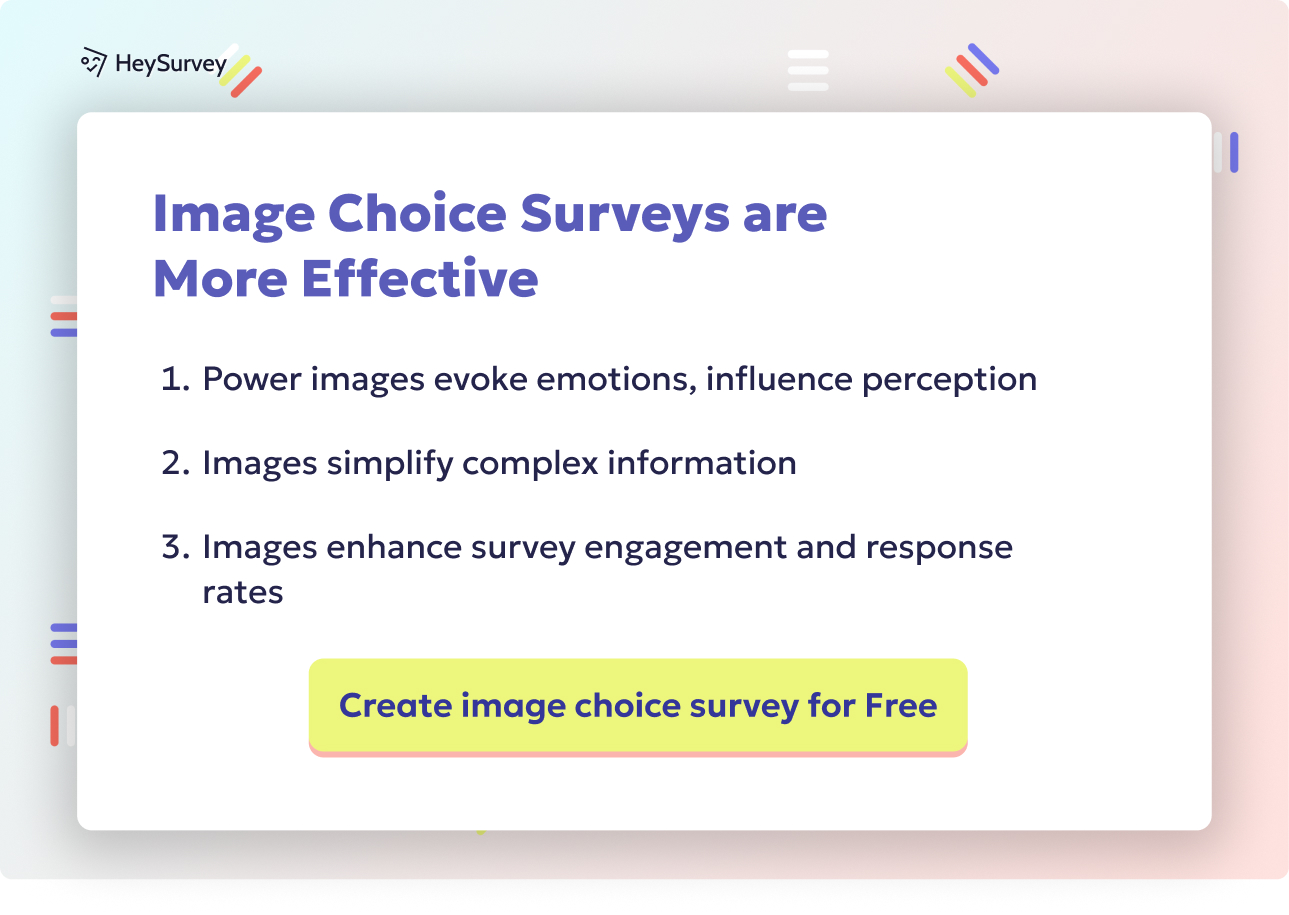
28 Restaurant Survey Questions to Boost Guest Satisfaction
Discover 28 insightful restaurant survey questions to improve guest experience, boost loyalty, an...
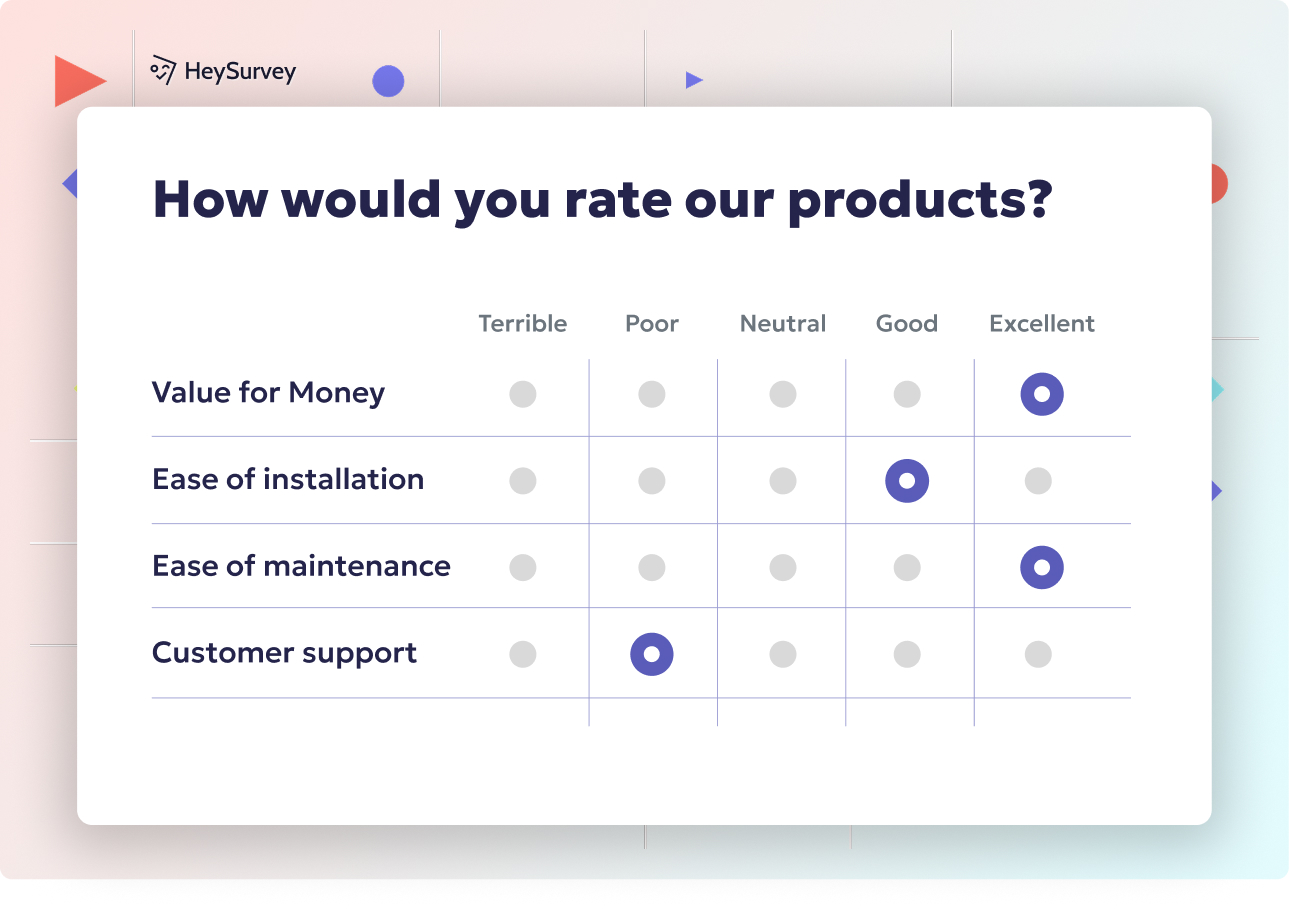
31 Interior Design Survey Questions: Types, Use & Examples
Discover 28 expert interior design survey questions covering preferences, style, budget, and more...
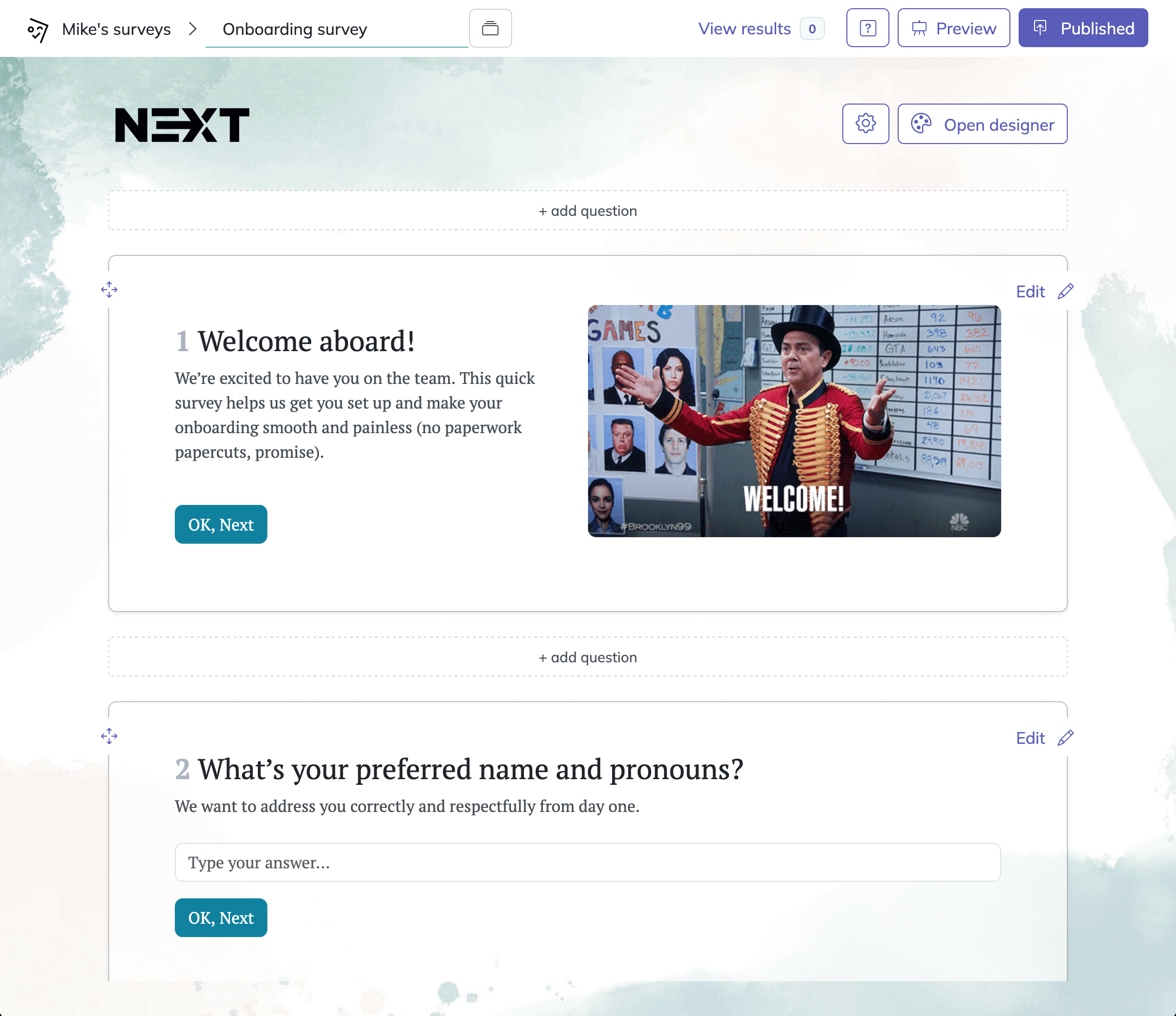
31 Essential Help Desk Survey Questions to Boost Support Success
Discover 30+ effective help desk survey questions with detailed examples to boost IT support feed...
